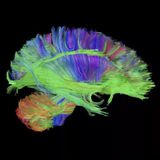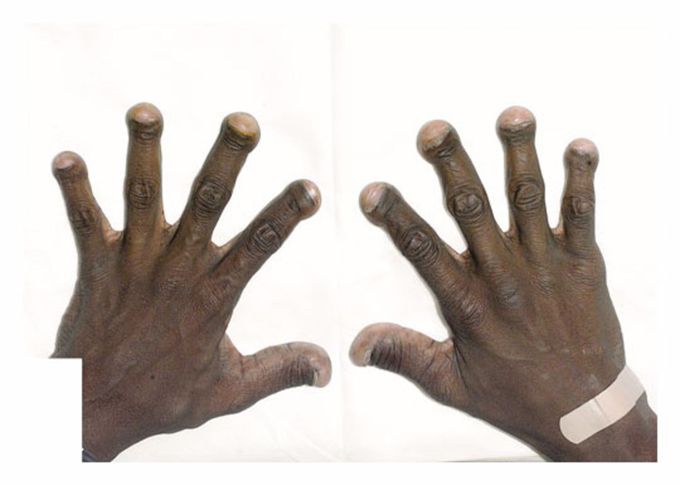


What is your diagnosis???
This 36-year-old man has undergone renal transplantation and parathyroidectomy. What is the most likely cause of the changes in his hands? a) Pseudoclubbing b) Albright's hereditary osteodystrophy c) Hypertrophic osteoarthropathy d) Yellow nail syndrome e) Psoriasis Source: nejm
CORRECT ANSWER:( A ) A 36-year-old man was referred for further evaluation after having changes in his fingers that were initially thought to be due to clubbing (Panels A and B). He had a history of obstructive nephropathy necessitating hemodialysis and renal transplantation. His course had been complicated by severe secondary hyperparathyroidism requiring parathyroidectomy. The digital changes had first been noted several years earlier, while he was undergoing dialysis, and progressed until he underwent parathyroidectomy. Close examination revealed that the nail-fold angle, or Lovibond's angle, was well preserved, and a diagnosis of pseudoclubbing from previous hyperparathyroidism was made. The changes in this patient's fingers are the result of soft-tissue collapse owing to severe bone erosions of the terminal phalanges. Pseudoclubbing may be distinguished clinically from clubbing by the preservation of the nail-fold angle and bony erosion of the terminal phalanges on radiography.



